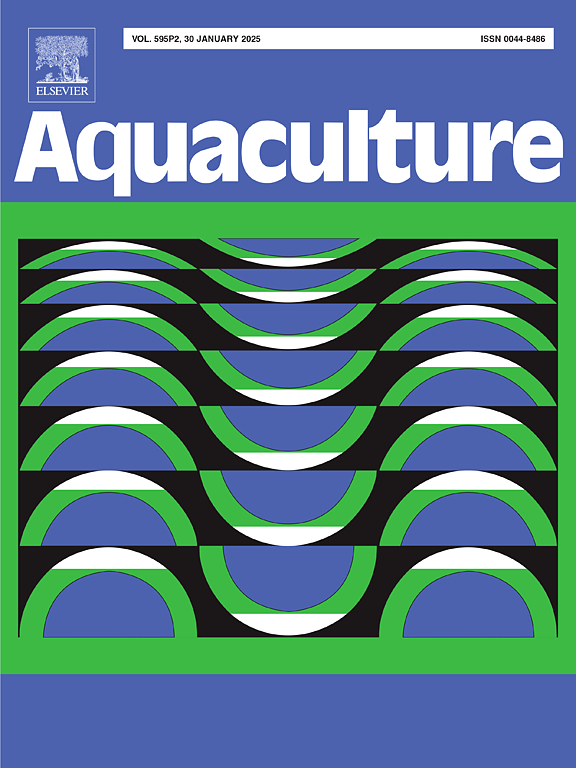Predish:用于估计水产养殖系统中鱼类捕食风险的决策支持工具
IF 3.9
1区 农林科学
Q1 FISHERIES
引用次数: 0
摘要
在同一环境中饲养多个物种的做法,即所谓的混养,是一种古老的方法,只要这些物种能够共存而不产生有害的相互作用,就能为提高水产养殖的可持续性提供许多好处。捕食是混养系统中最有害的相互作用之一,必须避免捕食以确保物种间的相容性。由于许多鱼食性物种通常在水产养殖中饲养,因此避免可能发生捕食的物种组合是至关重要的。为了解决这个问题,我们开发了一个模型,根据鱼的总长度来估计鱼之间的捕食风险,以避免经验试验,从而维护道德标准。该模型基于生态位异速生长框架,利用鱼类捕食事件(4207个实例)进行了校准,并利用鱼类捕食事件和非捕食事件(13707个事件)的综合数据集,利用特异性、敏感性、真实技能统计(TSS)和曲线下面积(AUC)方法进行了验证。该模型具有较高的准确性,灵敏度(捕食预测精度)为0.88,特异性(非捕食预测精度)为0.96,TSS为0.84,AUC为0.92。作为一个实际应用,我们在R软件中开发了一个决策支持工具Predish,允许用户估计鱼之间的捕食风险。Predish还包括一个数据库,以填补任何缺失的数据,使其成为设计新的混合养殖系统的宝贵资源,这些系统将以最小的捕食风险纳入鱼食性物种,最终支持水产养殖的可持续性。本文章由计算机程序翻译,如有差异,请以英文原文为准。
Predish: a decision support tool for estimating risk of fish predation in aquaculture systems
The practice of rearing multiple species within the same environment, known as polyculture, is an age-old approach that offers numerous benefits for enhancing the sustainability of aquaculture, provided the species can coexist without detrimental interactions. Predation is one of the most detrimental interactions in polyculture systems and must be avoided to ensure compatibility among species. Since many piscivorous species are commonly reared in aquaculture, it is crucial to avoid species combinations where predation might occur. To address this, we developed a model that estimates predation risk between fish based on their total length in order to avoid empirical trials and thereby uphold ethical standards. This model was calibrated based on niche allometric framework with an extensive dataset on fish predation (4,207 instances) and validated using the specificity, the sensitivity, the True Skill Statistic (TSS) and the area under the curve (AUC) method with a comprehensive dataset of fish predation and non-predation events (13,707 events). The model demonstrated high accuracy with a sensitivity (predation prediction accuracy) of 0.88, specificity (non-predation prediction accuracy) of 0.96, a TSS of 0.84, and an AUC of 0.92. As a practical application, we developed a decision-support tool, Predish, in R software to allow users to estimate predation risk between fish. Predish also includes a database to fill any missing data, making it a valuable resource for designing new polyculture systems that incorporate piscivorous species with minimal predation risk, ultimately supporting aquaculture sustainability.
求助全文
通过发布文献求助,成功后即可免费获取论文全文。
去求助
来源期刊

Aquaculture
农林科学-海洋与淡水生物学
CiteScore
8.60
自引率
17.80%
发文量
1246
审稿时长
56 days
期刊介绍:
Aquaculture is an international journal for the exploration, improvement and management of all freshwater and marine food resources. It publishes novel and innovative research of world-wide interest on farming of aquatic organisms, which includes finfish, mollusks, crustaceans and aquatic plants for human consumption. Research on ornamentals is not a focus of the Journal. Aquaculture only publishes papers with a clear relevance to improving aquaculture practices or a potential application.
 求助内容:
求助内容: 应助结果提醒方式:
应助结果提醒方式:


